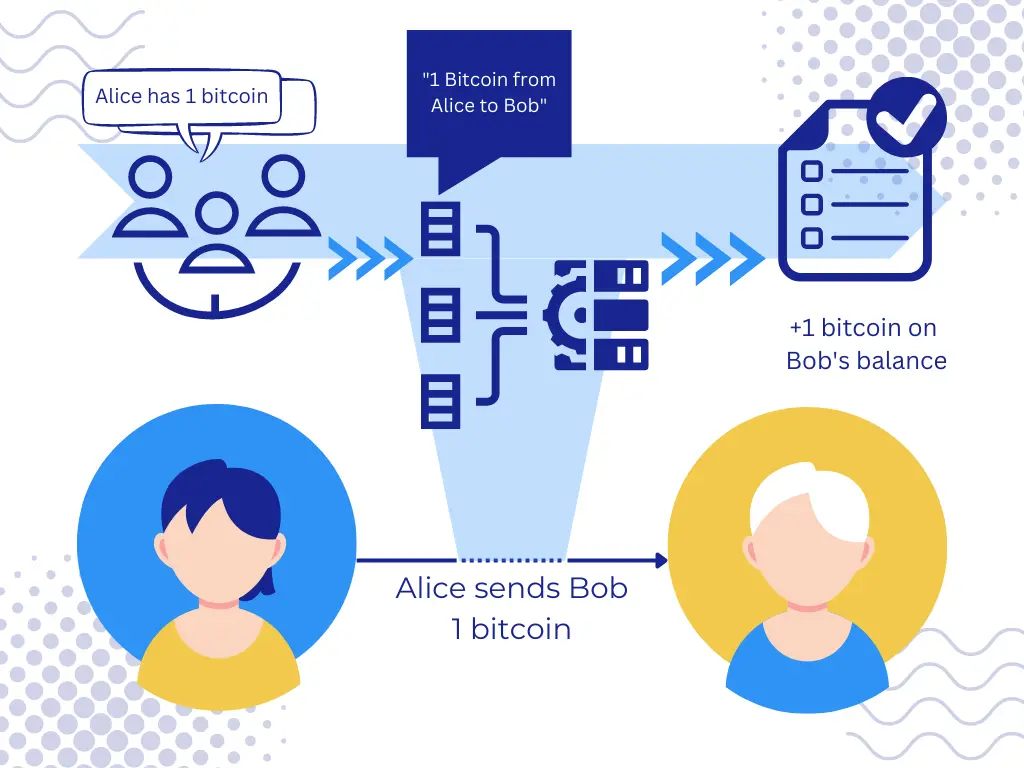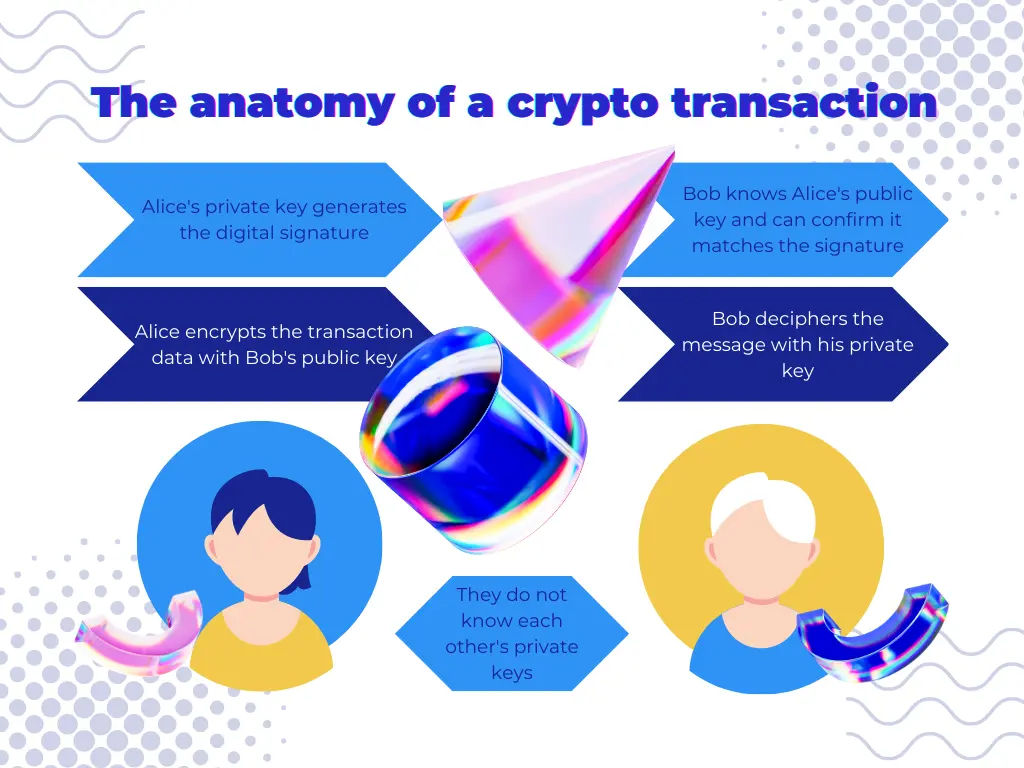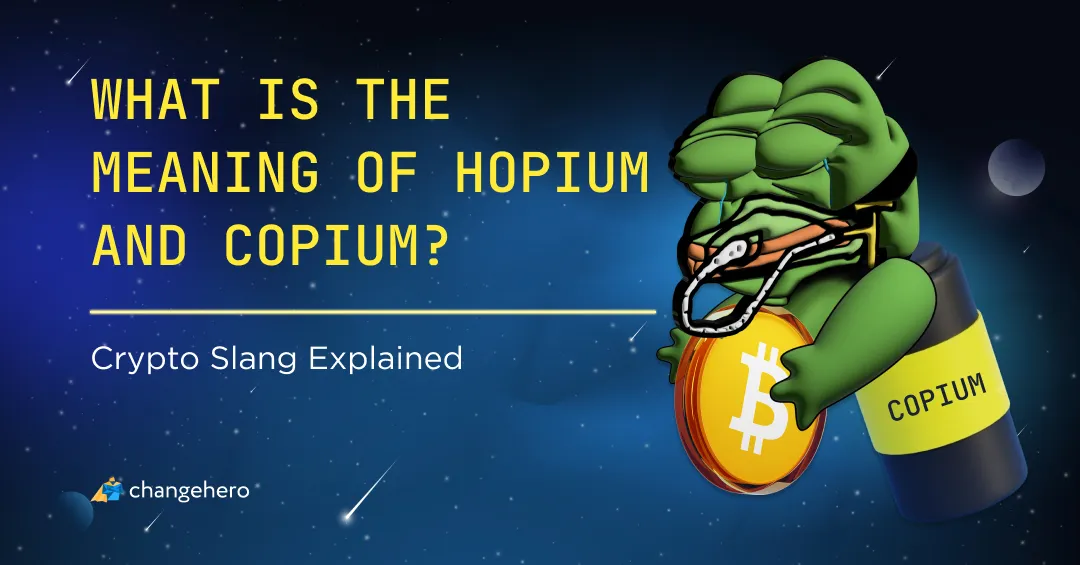In these guides, we explain the most common terms in crypto. Firstly, we give a definition of blockchain. Then we explain what cryptocurrency is. Finally, learn about digital currencies. Did you know they are all different?
What is blockchain?
Let’s start with blockchain technologies. It is an invention of computer science. Most commonly, people use blockchains to write down long lists of data. What is the block chain? It is a database with a structure like a chain of “blocks”. It is powered by cryptography, a math field studying ciphers.
Blocks store and encrypt records. Each block has a label called hash. Hash is not random because it is calculated. The previous block’s hash, and data entries in a block go into the formula. So, you cannot change the contents of a block or where does it go in a chain. It would change the hash and break the blockchain. This system in practice means blockchain history can’t be changed. This is why you cannot reverse a transaction.
Another strong point of blockchain is the lack of a single center. It can work without one organization in charge. Instead, many nodes keep a copy and do the math to solve ciphers. The nodes run all over the world. They compare records and check if they are right. As a result, no single organization controls the blockchain.

Explaining blockchain needs examples. It is often compared to a ledger, a book where you write down actions with money. Let’s say Alice wants to send Bob 1 bitcoin. What happens on the blockchain? Alice tells the blockchain “I send 1 bitcoin to Bob”. This action gets into a queue. Special blockchain nodes called miners check this record. If Alice has enough bitcoins, they approve transfer to Bob. Alice also adds a little extra bitcoin to help miners keep the blockchain working. If all is well, “Alice sent Bob 1 bitcoin” is added to the block and written in the blockchain. So, Bob gets 1 bitcoin (and is a lot richer now).
Blockchain, in layman’s terms, is a kind of database. It has its tradeoffs. You can only add new records to it. Old records cannot be edited or deleted. Also, many nodes worldwide have to be synchronized. But because of these tradeoffs, blockchain can’t be stopped or censored.
What is meant by cryptocurrency?
What is the definition of cryptocurrency? A cryptocurrencies’ definition hides in the parts of the word. “Crypto” comes from “cryptography”, a field of maths studying ciphers. Blockchain is a cryptographic invention. A “currency” of the blockchain is cryptocurrency. So, crypto-currency is a unit of value that a blockchain uses.
The meaning of a cryptocurrency is becoming wider. Today, a cryptocurrency can use something other than a blockchain. But a cryptocurrency is still, by definition, decentralized. Decentralization means no one controls it alone. Peer-to-peer (P2P) is also an important part of its definition. These days, people rarely run their own nodes, though. Crypto transfers can still be made without a higher authority. So it has to use some sort of encrypted ledger. Blockchains of modern crypto are more complex than a simple “chain of blocks”.
What is crypto currency and how does it work? People use it as a store of value. For example, Bitcoin has a limited supply. It will not become cheap because of inflation. People also use cryptocurrencies as digital money. Some merchants and shops accept it. Bitcoin is the same as the dollar in El Salvador.
Let’s review how cryptocurrency works. Alice wants to send Bob 1 bitcoin. She tells the blockchain “I send 1 bitcoin to Bob”. It checks if Alice has 1 bitcoin. Because she does, the transaction goes on. When nodes, called miners, solve a hash to the next block, “Alice sent Bob 1 bitcoin” is written in the blockchain. So, Bob gets 1 bitcoin. But how does the blockchain know it was Alice?

Cryptocurrencies use public key cryptography. Each user has at least one private key. It is a very long string of random characters. Pieces of these private keys form an address. Alice has to know a public key of Bob’s to send him bitcoin. It is safe to share a public key because you can’t learn the full private key from it. Alice’s software encrypts “I send 1 bitcoin to Bob” with his public key and signs it with a digital signature. It is generated from her private key and the transaction data. This way, miners can check if it was Alice who sent the transaction and Bob can get the message.
It is important to keep your private keys secret and safe. Anyone can make transactions with your money if they learn it. If you lose the private key, you risk losing all crypto on the address made from it. Most users these days work with blockchains with cryptocurrency wallets. Wallets show you a phrase of 12 or 24 words instead of a private key. In practice, these are the same things.
What is digital currency?

All cryptocurrencies are digital currencies. Not all digital currencies are crypto. So, what does digital currency mean? It is a digital form of money. A country’s central bank can issue money digitally. In that case, it is controlled by it. China and the Bahamas have Central banks’ digital currencies (CBDC).
Crypto is outside of state control and lets peers (users) send money directly to each other. In place of authorities, there is math and code. It rules out results without any prejudice.
Further reading: History of Money: Digital Currencies and Bitcoin
Our next part focuses on the most popular coins. We explain the basics of Bitcoin, Ethereum, and stablecoins. Find it here!








